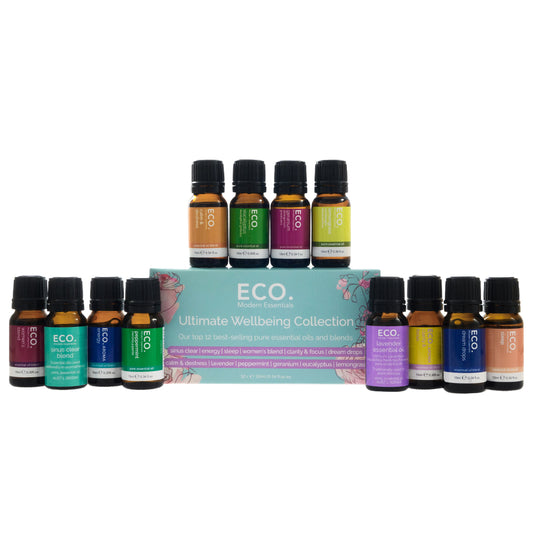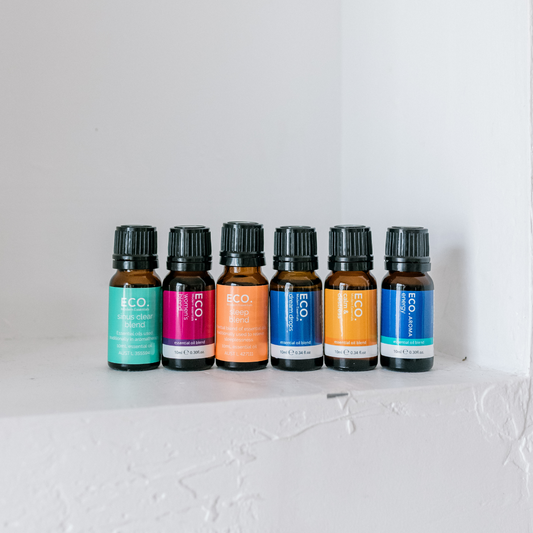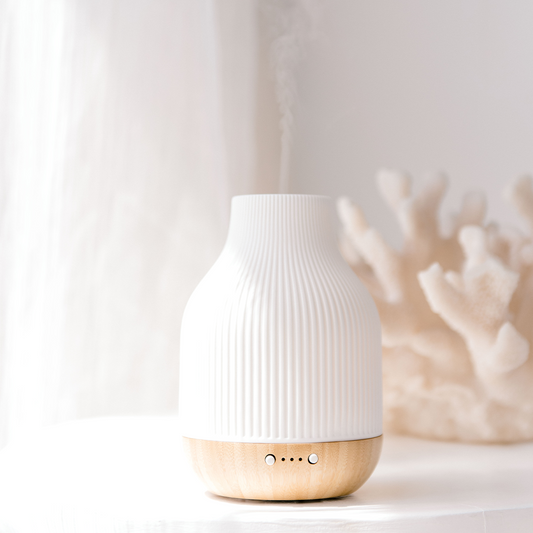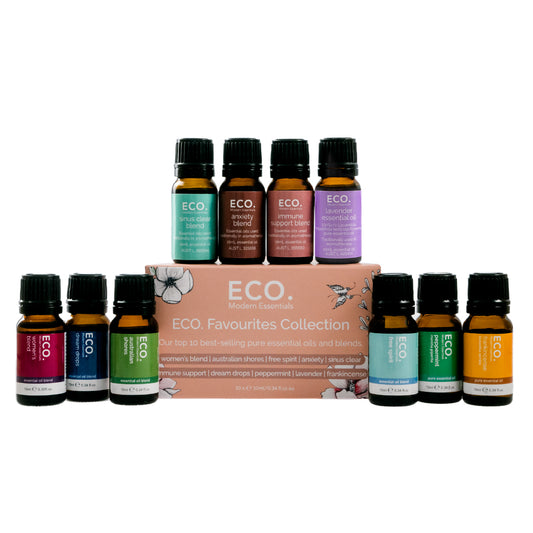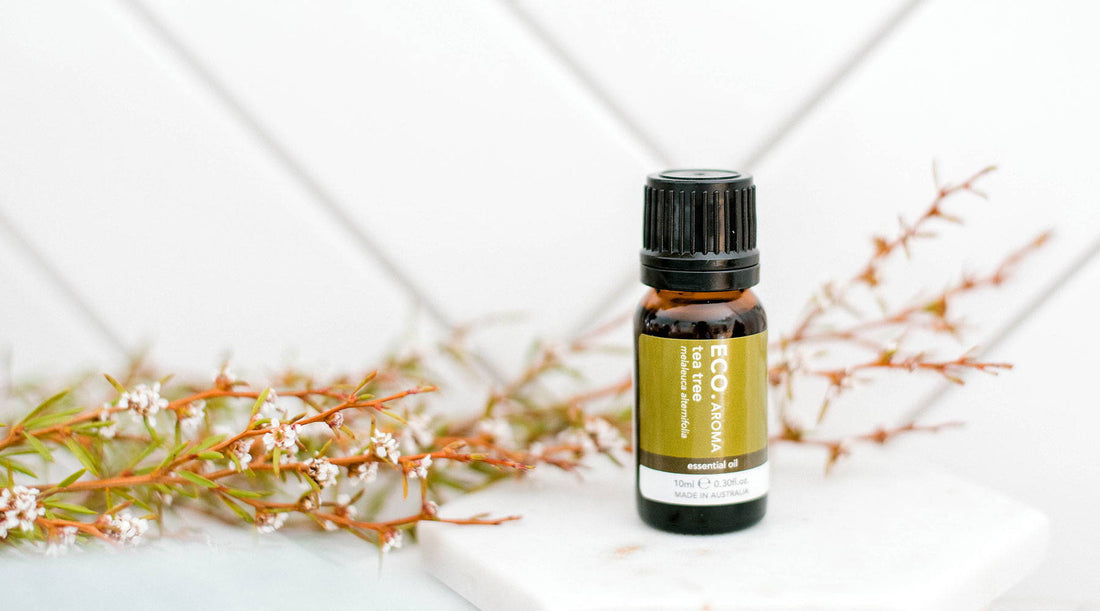
Benefits & Uses of Tea Tree Essential Oil
The aroma of Tea Tree essential oil is unique and distinctive. The powerful healing action of the oil is a gift from the ancient wisdom of this land. It is particularly helpful for those who are feeling weakened or defeated by challenging circumstances. The plant has been used for thousands of years to help us thrive and stay strong. Allow Tea Tree essential oil to help you restore your natural vitality for a vibrant spirit and healthy body.
Where is Tea Tree essential oil from?
Tea Tree is native to Bundjalung Nation and the surrounding regions which is located around the coastal areas of northern New South Wales and south-east Queensland. It prefers swampy conditions and warm, wet weather. The plant is extensively cultivated from Port Macquarie to northern Queensland for commercial use 1. The source of our Tea Tree essential oil is on land overlooking the Pacific Ocean. The farm is a mix of coastal floodplain, paperbark forest, and fields with rich red soil. The farm is owned and operated by two families. They aim to produce nutrient rich products while actively rejenerating the nearby remnants of ancient rainforest.
How is Tea Tree essential oil made?
Tea Tree essential oil is extracted by steam distillation. The entire plant can be used. Harvested plant material is chipped then submerged under water in a sealed container. Once the temperature reaches around 100 ˚C the steam is released into condensing tubes where it cools down. Once cooled the essential oil and water separate and both healing substances are collected in a vat. The essential oil floats to the top and the aromatic water, or hydrosol, is saved and also used for aromatherapy. In 2010 it was reported that 450 000 kg of Tea Tree essential oil was produced in Australia and a large amount was exported globally.
What does Tea Tree essential oil smell like?
Tea Tree essential oil has a very dry and medicinal aroma. There is a camphorous tone that is underscored with a sweetness that brings to mind the freshness of an Australian rainforest.
What does Tea Tree look like?
Melaleuca alternifolia or Tea Tree is a small tree that grows to about 7 meters tall. The trunk is covered in paperbark and the flowers are a creamy white bottlebrush. The leaves, as the botanical name suggests, grow alternatively along the stem and are narrow and flexible. Tea Tree is closely related to the medicinal plants that produce Niaouli (Melaleuca quinquenervia) and Cajuput (Melaleuca leucadendron) essential oils.
History of Tea Tree
The people of the Bundjalung Nation crushed or heated the leaves to treat coughs and respiratory complaints. Wounds and infections were managed by applying a poultice of Tea Tree leaves to the affected area. 3 The name Tea Tree was given to the plant by European settlers either because the leaves where made into tea or the water around the trees stains to the color of tea. In the 1920s Dr. Penfold, an Australian government scientist, began to investigate the properties of the plant and found that the essential oil was stronger than disinfectants used at the time and more readily available. Tea Tree essential oil was also found to be more gentle to the skin than carbolic acid. Tea Tree essential oil was included in some soldier’s first aid kits in World War II. Due to the medicinal value of Tea Tree essential oil, the plant was extensively cultivated and added to many health and beauty preparations.
What are the benefits of Tea Tree essential oil?
Skin Conditions: Tea Tree is an excellent treatment for acne. It has been proven to be as effective as benzyl peroxide and often kinder to the skin. The powerful antimicrobial action of Tea Tree is useful for treating wounds and other skin and nail infections. Bug bites may also be soothed by Tea Tree.
Lowered Immunity: Tea Tree really shines as an antimicrobial and it is reported to support the immune system. Terpinen-4-ol is a compound in the essential oil and thought to increase white blood cell production. White blood cells are responsible for destroying infected cells in the body. For those with lowered immune systems either through medication, health conditions or exhaustion, Tea Tree is a protective essential oil.
Respiratory Support: Tea Tree has a strong anti-viral and anti-bacterial action. Add Tea Tree essential oil to the diffuser to prevent airborne germs from spreading or use in a steam inhalation to help manage respiratory infections.
Antimicrobial: A large body of research supports findings that Tea Tree essential oil effectively neutralises a variety of pathogens including some antibiotic resistant strains of bacteria. We can keep our families safe by adding Tea Tree essential oil to hand soap, disinfectant sprays, and cleaning products.
Dandruff: Enrich your shampoo with Tea Tree essential oil to help clear up dandruff. Some cases of dandruff are thought to be caused by fungal infection which Tea Tree essential oil may improve. The anti-inflammatory property of the oil may also soothe an irritated and itchy scalp.
Mental Stamina: Tea Tree essential oil can invigorate and uplift the spirits. When we are under pressure it has been recommended to help improve mental resilience. Tea Tree can help us combat apathy, lethargy, and melancholy after prolonged stress.
How do you use Tea Tree essential oil?
Contraindications of Tea Tree essential oil
Tea Tree is one of the few essential oils that can be applied neat to the skin. It is considered to be generally non-irritating, although may aggravate very sensitive skin. Tea Tree essential oil is reportedly safe to use in pregnancy, for people with chronic illness and children. Always store your essential oils in a dark and cool location to prevent them from spoiling.
Sources:
1. Tony Larkman, ‘Taking Clean and Green Tea Tree Oil to the World’, Australian Forest Grower, Vol. 33, No. 3, Spring 2010, p. 41.
2. Ibid.
3. Graham Jones, ‘Indigenous Medicine – a Fusion of Ritual and Remedy’, The Conversation, Dec 5, 2014.






